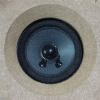Ravindra Desai
Well-Known Member
Hello All,
In continuation to my posts My Digital Audio Processor and My Audio Amplifier, kindly find My Speaker System in this thread.
It is hand made from 11mm MDF pasted with black laminate.
It was designed with robust built in mind that should survive the Indian Courier system. I am not very good with aesthetics as I am with electronics design. But here it is for your comments:
For 2.1CH Surround:
1 x Dual Speaker Center
2 x Single Speaker Surrounds
1 x Single speaker sub-woofer,
1 x Ampli-decoder.
For 2.1CH Stereo
2 x Dual Speaker Center
1 x Single speaker sub-woofer,
1 x Ampli-decoder.
For 2.1CH Surround/ Stereo:
3 x Dual Speaker Center
2 x Single Speaker Surrounds
1 x Single speaker sub-woofer,
1 x Ampli-decoder.
Note that the last configuration uses a switch to change the configuration from stereo to surround and vice versa.
Also note that the Ampli-decoder can be programmed to support 2.0 Stereo also in which case two tower or book shelf speakers would be needed.
Let me know what you think.
Thanks in advance!!
Ravindra.
In continuation to my posts My Digital Audio Processor and My Audio Amplifier, kindly find My Speaker System in this thread.
It is hand made from 11mm MDF pasted with black laminate.
It was designed with robust built in mind that should survive the Indian Courier system. I am not very good with aesthetics as I am with electronics design. But here it is for your comments:
For 2.1CH Surround:
1 x Dual Speaker Center
2 x Single Speaker Surrounds
1 x Single speaker sub-woofer,
1 x Ampli-decoder.
For 2.1CH Stereo
2 x Dual Speaker Center
1 x Single speaker sub-woofer,
1 x Ampli-decoder.
For 2.1CH Surround/ Stereo:
3 x Dual Speaker Center
2 x Single Speaker Surrounds
1 x Single speaker sub-woofer,
1 x Ampli-decoder.
Note that the last configuration uses a switch to change the configuration from stereo to surround and vice versa.
Also note that the Ampli-decoder can be programmed to support 2.0 Stereo also in which case two tower or book shelf speakers would be needed.
Let me know what you think.
Thanks in advance!!
Ravindra.










